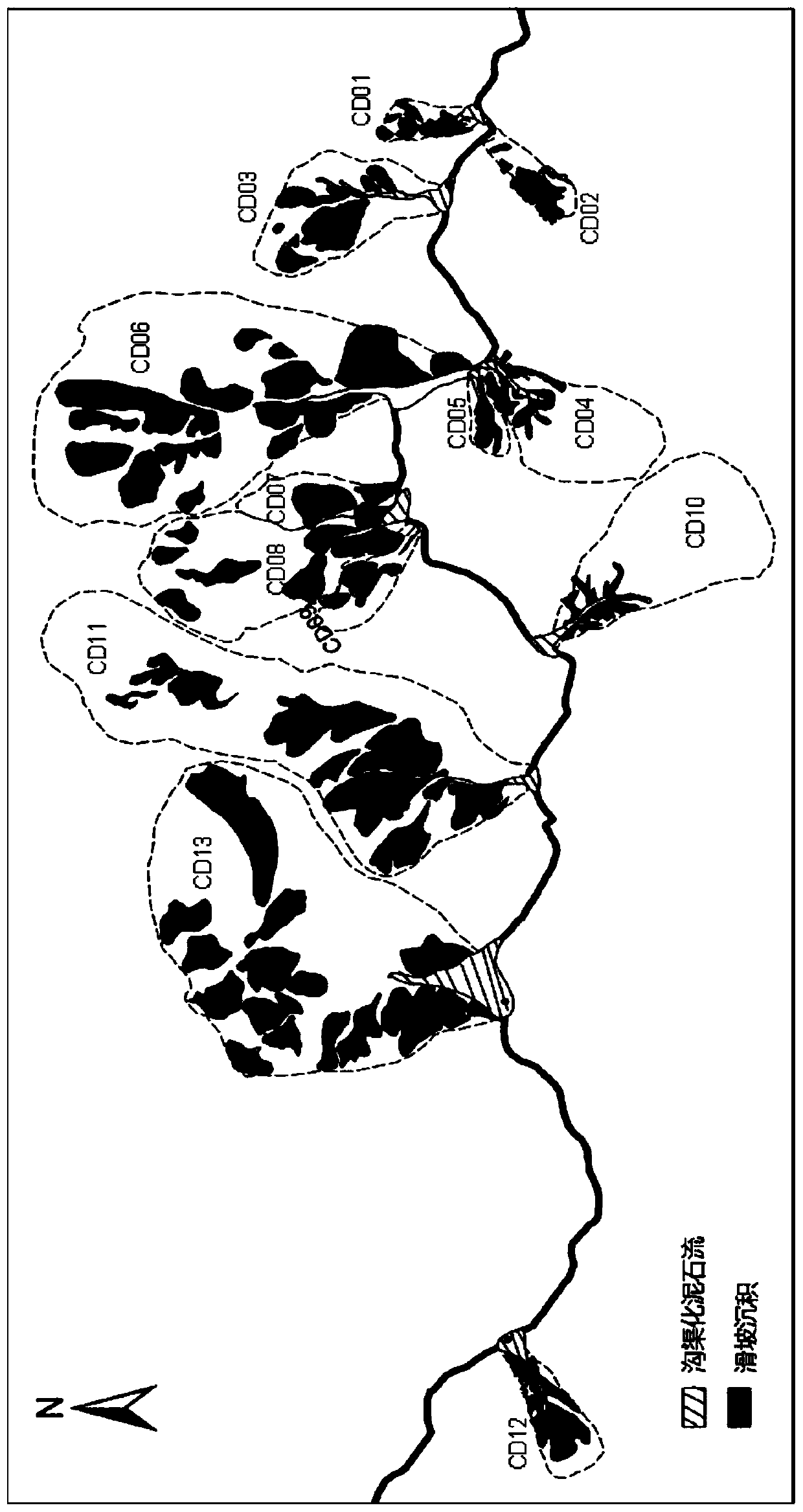Risk quantitative evaluation method and device for geological disaster chain after strong earthquake
A technique for quantitative assessment and geological hazards, applied in data processing applications, instruments, calculations, etc.
- Summary
- Abstract
- Description
- Claims
- Application Information
AI Technical Summary
Problems solved by technology
Method used
Image
Examples
Embodiment 1
[0050] This example is based on the research along the Yingxiu-Wolong Highway after the Wenchuan Earthquake, and according to the meteorological conditions and disaster outbreak rules in the extremely severe earthquake-stricken area, the risk assessment of the landslide-debris flow disaster chain induced by rainfall is carried out. Among the 16 valley debris flow basins distributed along the Yingxiu-Wolong highway, 13 are identified by field investigation as being prone to disaster chains. risk. The distribution positions of these 13 debris flow ditches are as follows: figure 1 .
[0051] When evaluating the disaster chain, it is necessary to consider the interaction between disasters: (1) due to the overlapping of risks caused by multiple disasters, for example: the overlapping accumulation areas caused by the occurrence of disasters in two adjacent watersheds at the same time; 2) With the occurrence of disaster chains, the intensity of disasters increases, and the amplific...
Embodiment 2
[0116] Based on Example 1, after quantifying the risk of the disaster chain, refer to the general guidelines of ALARP in the international scope, such as image 3 , and the landslide loss of life risk acceptance criteria proposed by the Geotechnical Engineering Department of Hong Kong, such as Figure 4 , to define the acceptable level of risk, establish a risk acceptable criterion model, divide the level according to the tolerance level of disaster loss, and divide the level of disaster risk into unacceptable range, tolerable range and acceptable range; social risk and / or individual risk The quantitative value of the corresponding risk acceptance criterion model, evaluates the risk level, and provides a basis for the safety evaluation of the post-disaster reconstruction plan and the establishment of safety measures. The risk acceptability criterion model is represented by the F-N curve of "annual average probability of accident occurrence (F) - death toll (N)", such as Figu...
Embodiment 3
[0119] This embodiment provides a risk quantitative assessment device, including at least one processor, and a memory connected to the processor in communication; the memory stores at least one instruction that can be executed by the corresponding processor, and the instruction is executed by the processor, so that the processing The device can perform all or part of the steps described in the above embodiments.
[0120] Those skilled in the art can understand that all or part of the steps for implementing the above-mentioned method embodiments can be completed by hardware related to program instructions, and the aforementioned programs can be stored in computer-readable storage media. Steps of a method embodiment. When the above-mentioned integrated units of the present invention are realized in the form of software function units and sold or used as independent products, they can also be stored in a computer-readable storage medium. Based on this understanding, the technica...
PUM
 Login to View More
Login to View More Abstract
Description
Claims
Application Information
 Login to View More
Login to View More - R&D
- Intellectual Property
- Life Sciences
- Materials
- Tech Scout
- Unparalleled Data Quality
- Higher Quality Content
- 60% Fewer Hallucinations
Browse by: Latest US Patents, China's latest patents, Technical Efficacy Thesaurus, Application Domain, Technology Topic, Popular Technical Reports.
© 2025 PatSnap. All rights reserved.Legal|Privacy policy|Modern Slavery Act Transparency Statement|Sitemap|About US| Contact US: help@patsnap.com



